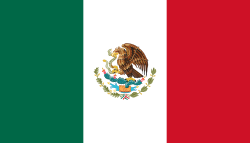An editor has nominated this article for deletion. You are welcome to participate in the deletion discussion , which will decide whether to keep it. |

The following is an alphabetical index topics related to Mexico.
An editor has nominated this article for deletion. You are welcome to participate in the deletion discussion , which will decide whether to keep it. |

The following is an alphabetical index topics related to Mexico.


